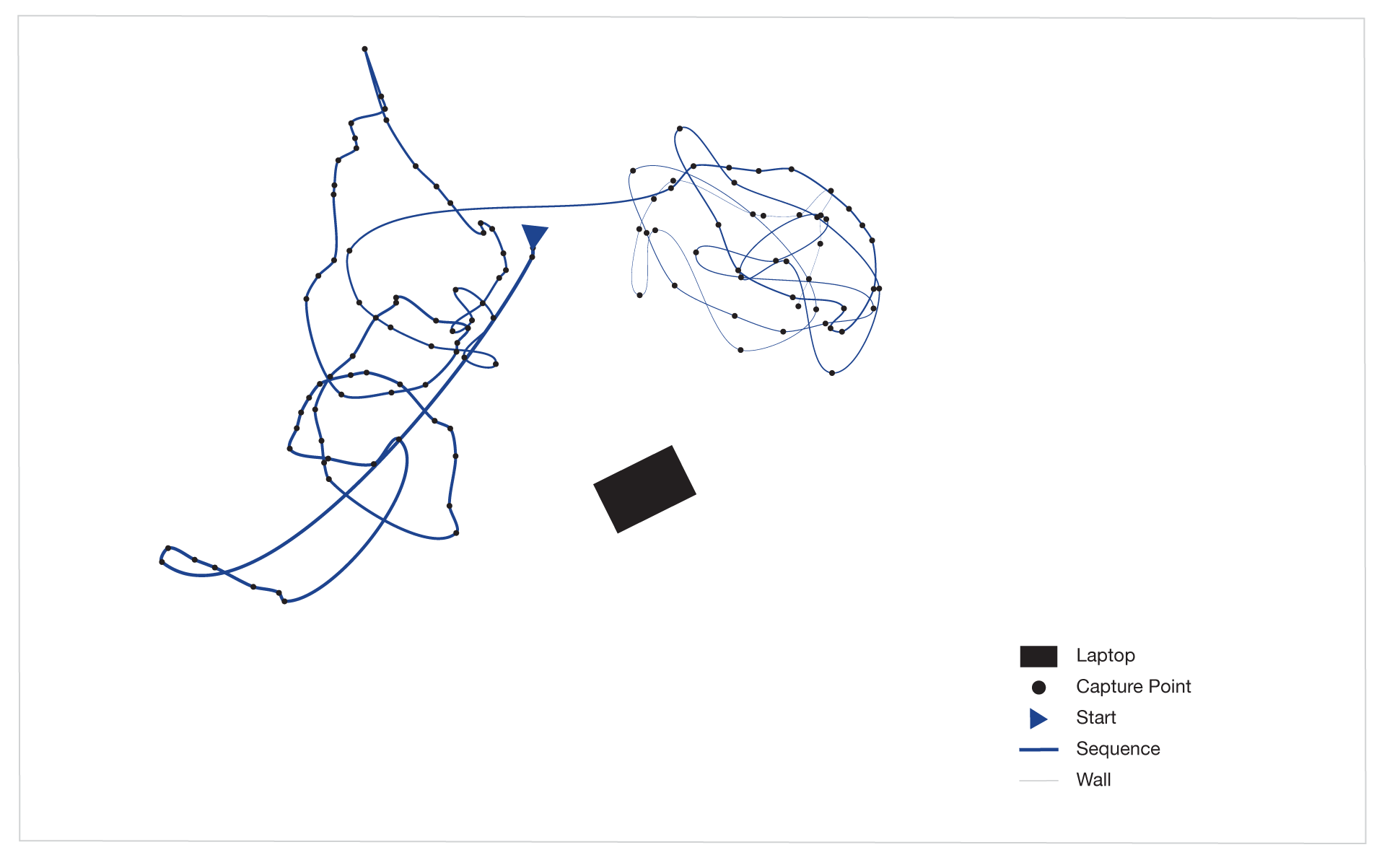Meeting No. 001
Conducted virtually.
Joined by artists from NY and SF where social distancing is enforced.
The artists included Francesca Rodriguez Sawaya, Renata Gaui (both Tangible Code instructors), Pamela Liou (an open source loom creator), Rena Anakwe (an artist who works with sound, visuals, and scent), and Windy Chien (an artist who works with knots).
Conducted virtually.
Joined by artists from NY and SF where social distancing is enforced.
The artists included Francesca Rodriguez Sawaya, Renata Gaui (both Tangible Code instructors), Pamela Liou (an open source loom creator), Rena Anakwe (an artist who works with sound, visuals, and scent), and Windy Chien (an artist who works with knots).

Image Capture
During the workshop, we played with different ways of looking at our familiar spaces and used our cameras to pay close attention to these findings. These hundreds of photographs were stitched and reconstructed into three-dimensional digital scans.
During the workshop, we played with different ways of looking at our familiar spaces and used our cameras to pay close attention to these findings. These hundreds of photographs were stitched and reconstructed into three-dimensional digital scans.

Photo Knitting
After comparing similar points in photographs, the photogrammetry software is also able to calculate the original capture position, angles, and sequence of shots in space.
After comparing similar points in photographs, the photogrammetry software is also able to calculate the original capture position, angles, and sequence of shots in space.

Data Portrait I
The black box in this diagram is the location of the laptop, the triangle indicates the first photograph taken, and the outer rectangle is the shape of this room.
These experiments use digitizing technologies as a way to generate data portraits, and offer the possibility to surface local knowledge that forms the background of our inner experience.
The black box in this diagram is the location of the laptop, the triangle indicates the first photograph taken, and the outer rectangle is the shape of this room.
These experiments use digitizing technologies as a way to generate data portraits, and offer the possibility to surface local knowledge that forms the background of our inner experience.

Data Portrait II
The places where people decide to take the most photographs are also the places with the most detail in the final scan, creating a visual emphasis that corresponds to each artist’s unique set of concerns and emotions at that time. Each artist’s unique set of concerns, physical constraints, time of day, and habits produces images of wildly varying focus and emotional valence.
For example, Pamela Liou observed that she “spen(t) a lot of time over here at this nightmare corner where things tend to accumulate for weeks... I have these, like, psychological vacuum spaces, and I just psychologically block them off."
The places where people decide to take the most photographs are also the places with the most detail in the final scan, creating a visual emphasis that corresponds to each artist’s unique set of concerns and emotions at that time. Each artist’s unique set of concerns, physical constraints, time of day, and habits produces images of wildly varying focus and emotional valence.
For example, Pamela Liou observed that she “spen(t) a lot of time over here at this nightmare corner where things tend to accumulate for weeks... I have these, like, psychological vacuum spaces, and I just psychologically block them off."

Layered Portraits
Individual portraits connected using screens as an anchor.
Individual portraits connected using screens as an anchor.

